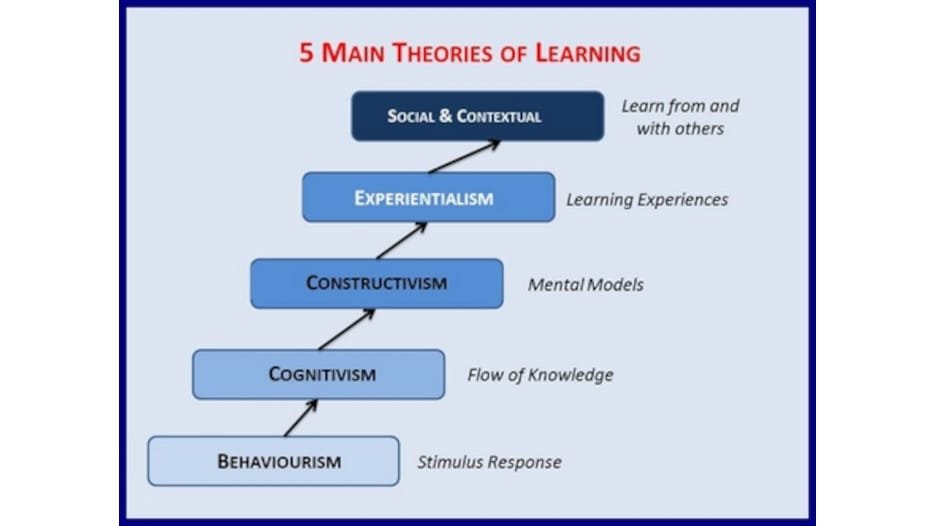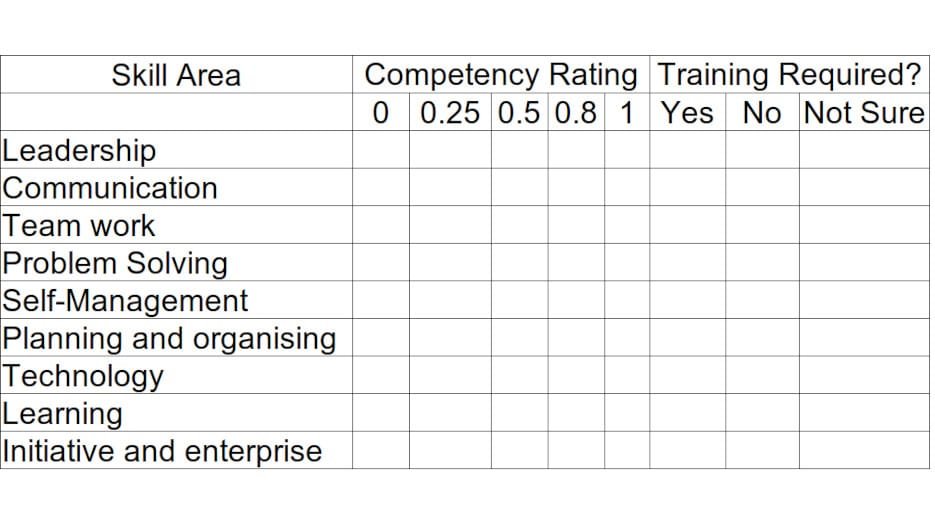Human Resource Management: Get the Best of both Worlds by Combining Learning and Development

Introduction
This short essay aims to critically validate the requirement for senior Human Resource Development (HRD) managers to appreciate the variety and assortment of individual learning difficulties of employees before planning operative training, learning and development mediations.
There is widespread acknowledgement of the criticality of employees in the achievement of organisational growth, competitive advantage and success (Werner & DeSimone, 2011, p 78). The overwhelming majority of business firms engaged in competitive activity place significant stress on the selection and recruitment of suitable people, followed by their appropriate and planned training and development for enabling them to address the needs of their various responsibilities with adequacy and effectiveness, both at present and in future (Werner & DeSimone, 2011, p 78). HRD managers facilitate the learning and development of their employees through suitable training in order to ensure that their modified behaviour can contribute to the achievement of organisational goals and objectives (Mankin, 2009, p 37).
Training has been termed as the procedure of attainment of particular abilities for the augmentation of job performance (DeSimone et al., 2002, p 29). Organisational learning and development programmes assist organisational employees in enhancing their knowledge and in developing appropriate capabilities for handling the various challenges, demands and responsibilities of their assignments, both at present and in future (DeSimone et al., 2002, p 30).
It is imperative to appreciate that managerial education and training is grounded upon the appreciation and implementation of different learning theories (Mankin, 2009, p 37). This paper utilises learning theories in order to address the requirement for both general and particular training and to appreciate the precise wants and difficulties of employees in the development of suitable and operative training, learning and development interventions (Mankin, 2009, p 42).
Discussion and Analysis
It is important to understand and make use of learning theories to formulate appropriate and effective training, learning and development strategies in contemporary organisations (Wilson, 2005, p 79).
Learning Theories
The behaviourists, cognitivists and humanists focus upon diverse aspects of the teaching / learning process in their training rationale (Wilson, 2005, p 79).
CHART 1: THEORIES OF LEARNING (Source: Thompson, 2012)
The behaviourists stress upon outside situations, i.e. upon the milieu and upon interpretations and quantifiable modifications in employee behaviour (Wilson, 2005, p 79). The cognitivists emphasise upon the functioning of the mind, including mental procedures like coding and categorisation in the creation of training programmes, whilst the humanists draw attention to the affective features of human behaviour, like for example feelings and outlooks that impact learning (Harrison, 2009, p 103). Many modern HRD experts agree that effective training should make appropriate use of all learning theories in order to beneficially alter the knowledge, beliefs, actions and attitudes of employees (Harrison, 2009, p 103).
Diversity of Training and Development Activity
It is imperative to consider the intricacy and assortment of training in order to validate the criticality of comprehending the distinct learning and developmental requirements of employees in the preparation of suitable training and development packages (Ashton & Sung, 2002, p 67). Organisational training comprises the process of employee development for the purpose of enhancing the performance of incumbents holding positions with assigned job responsibilities (Westwood, 2004, p 1-2). Such training promotes the personal and professional development and growth of individuals and their ability to contribute to the achievement of organisational objectives (Westwood, 2004, p 1-2).
CHART 2: IMPORTANCE OF TRAINING EMPLOYEES (Source: O’Neill, 2020)
Training can broadly be categorised into five specific types, namely (a) induction training, (b) foundation training, (c) on-job training, (d) maintenance training, and (e) career development training (Marquardt, 2011, p 54). These various kinds of training have to be delivered at precise points of the livelihoods of employees in order to safeguard their complete and inclusive development (Royal Institution of Chartered Surveyors, 2012, p 3). Most training and development tasks can be further separated into (a) general or wide-ranging training, (which is as a rule the same for all persons and focuses on the expansion of overall abilities and awareness), and (b) focussed training, (which emphasises upon the improvement of precise abilities and talents in individuals) (Royal Institution of Chartered Surveyors, 2012, p 3).
Need to Understand Individual Employee Needs
Current HRD researchers and experts have recurrently detailed that whereas organisational managements are well mindful of the requirement for training and the cautious utilisation of different training systems and procedures, they do not at all times make the effort to appreciate the individual wants of workers (Ashton & Sung, 2002, p 67). There is little difficulty in appreciating that some training needs are bound to be universal and apply to many, if not all organisational employees (Ashton & Sung, 2002, p 69). It is nevertheless equally correct that each and every operative is distinctive and sure to have diverse skills, cognitive levels, accountabilities and goals (Marquardt, 2011, p 54). Such differences in skills and abilities amongst employees will require addressing during formulation and implementation of training and development programmes.
CHART 3: THE LEVELS OF A TRAINING NEEDS ANALYSIS (Source: Getsmarter, 2019)
Training and development managers are accordingly being advised to refrain from following “one size fits all” training approaches in order to make them effective and relevant for organisational purposes (Torrington et al., 2004, p 91).
Torrington et al., (2004, p 91) stated that they should very clearly focus upon understanding the individual training needs of employees in order to deliver desired training outcomes. Experts like Werner & DeSimone (2011, p 106) have however warned that attempts to identify the training and development needs of individual employees are bound to increase the costs of training programmes and should thus be done with care. They have stated that training programmes dealing with general topics can in all likelihood be successfully executed after an appraisal of the collective needs of the employees chosen for training, rather than the determination of individual training needs (Werner & DeSimone, 2011, p 109).
Contemporary managers attempt to devise training, learning and development programmes on the basis of job needs, group needs and organisational needs in order to ensure achievement of organisational priorities, requirements and objectives (Torrington et al., 2004, p 92). It is at the same time important to ascertain the individual needs of employees and the skills required by them to carry out their current jobs and future assignments, as well as achieve their career plans (Smith & Mazin, 2004, p 139). Such training requirements can be recognised by studying the job reports of personnel, communicating with them in participative individual and group gatherings, seeing them at their workstations, collecting supplementary information and analysing such data. The identification of such needs is essential to arrive at the training needs of individual employees (Smith & Mazin, 2004, p 139).
Several successful contemporary organisations have engaged in extensive scrutiny of individual needs in the development of training programmes (Torrington et al., 2004, p 91). The Arthritis Research UK National Primary Care Centre for instance evaluates the training needs of service users through one to one meetings and deliberations about precise training wants (INVOLVE, 2014, p 1). The UK Commission for Employment and Skills (2009) stated that employers should identify the training needs of employees through various methods, including the filling in of checklists by trainees. The details of such a checklist are provided in the following table.
TABLE 1: CHECKLISTS BY TRAINEES (Source: UK Commission for Employment and Skills)
Werner and DeSimone (2011, p 85) stated that the identification of individual learning and developmental needs enables and facilitates HRD experts to develop effective training programmes; the construction and elements of such programmes can vary with individual and organisational training needs and objectives. Training can be provided in various ways, including through (a) in-house courses, (b) external training, (c) apprenticeship, (d) e-learning, (f) blended learning (g) books or journals, (h) coaching, (i) mentoring, (j) shadowing, (k) secondment, (l) action learning (m) technical training and (n) continued professional development (Werner & DeSimone, 2011, p 88). Each of these training methods has its individual merits and demerits, as well as cost implications (DeSimone et al., 2002, p 52).
The choice of a suitable training and learning intermediation can nevertheless be enhanced by considering the individual needs, as well as particular learning or thinking styles (DeSimone et al., 2002, p 52). Whilst these styles may be difficult to address initially, they can be identified with the help of external trainers who are capable of working out individual learning styles. This can be followed by the development of training programmes that are aligned to suit specific learning styles (Wilson, 2005, p 87). Such approaches are likely to result in better knowledge retention and more successful training and development in terms of individual and organisational benefits (Mankin, 2009, p 49).
Conclusions
The exploration undertaken for this paper exposed that individual workers are likely to be distinctive, with respect to their learning, upbringing, abilities, training requirements and learning methods and styles. The implementation of a general training method for providing training to a cluster of workers is thus likely to be impacted by insufficiencies because it may not address the distinct training wants and learning styles of diverse workers (Smith & Mazin, 2004, p 139). There is thus general consensus amongst HRD experts that organisational managements should make efforts to understand and determine the specific training needs of different employees in order to be able to develop training programmes that address these needs effectively.
The adoption of such an approach will certainly ensure greater delivery of training and result in more effective learning and development at the employee level (Marquardt, 2011, p 54). It must nonetheless also be deliberated that such attempts to address individual training needs are likely to include additional costs and should be assimilated in training programmes only where training, learning and development packages try to address particular, challenging and stimulating employee and organisational needs (Werner & DeSimone, 2011, p 88).
References
Ashton, D., & Sung, J., (2002), Supporting workplace learning for high performance working, Geneva: International Labour Organization (ILO).
DeSimone, R.L., Werner, J.M. and Harris, D.M., (2002), Human Resource Development, 3rd edition, Orlando: Harcourt College Publishers.
Getsmarter, (2019), “How to Identify Key Training and Development Needs for Your Employees”, Available at: https://www.getsmarter.com/blog/employee-development/how-to-identify-key-training-and-development-needs-for-your-employees/ (accessed October 18, 2020).
Harrison, R., (2009), Learning and Development, London: CIPD.
INVOLVE, (2014), “Informal approach to assessing training needs”, Available at: http://www.invo.org.uk/training-case-study-nine-2/ (accessed October 09, 2014).
Mankin, D., (2009), Human Resource Development, Oxford: Oxford University Press.
Marquardt, M.J., (2011), Building the Learning Organization: Achieving Strategic Advantage through a Commitment to Learning, 3rd edition, NY: Nicholas Brealey America.
O’Neill, E., (2020), “The Importance of Training Employees for your Business”, Available at: https://www.learnupon.com/blog/importance-of-training-employees/ (accessed October 18, 2020).
Royal Institution of Chartered Surveyors, (2012), Why is training important to your firm?, Royal Institution of Chartered Surveyors, London, Available: at:
http://www.rics.org/site/scripts/documents_info.aspx?categoryID=385&documentID=185&pageNumber=2 (accessed October 10, 2014).
Smith, A. S., & Mazin, A. R., (2004), “Training and Development”, The HR Answer Book, London: AMACOM Div American Mgmt Assn.
Thompson, K., (2012), “The five major theories of how people “learn”: a synopsis”, Available at: https://bioteams.com/2012/11/05/the-five-major.html (accessed October 18, 2020).
Torrington, D., Hall, L., & Taylor, S., (2004), Human Resource Management, NJ: Pearson Education.
UK Commission for Employment and Skills, (2009), National Employers Skills Survey, London: Harvard business.
Westwood, M., (2004), “Positioning HRD/training in an Organisation”, Available at: http://www.knowledgeboard.com/cgi-bin/item.cgi?id=123852&d=1&h=417&f=418&dateformat=%o%20%B%20%Y (accessed October 09, 2014).
Werner, M.J., & DeSimone, L.R., (2011), Human Resource Development, 6th edition, London: Cengage Learning, Inc.
Wilson, P.J., (2005), Human Resource Development: Learning and Training for Individuals and Organizations, 2nd edition, London: Kogan Page.
More From This Category
Actions and Behaviour of Employees at Work
Notwithstanding the evolution of management theory and practice towards control of employee behaviour, failures in controlling of employee behaviour keep on happening and are considered to be one of the main reasons behind the continuing difficulties in the management of change. This area of organisational behaviour continues to attract significant attention.
How to Create an Organisation where Employees Behave
Notwithstanding evolution of management theory and practice towards control of employee behaviour, failures in controlling of employee behaviour keep on happening and are considered to be one of the main reasons behind the continuing difficulties in management of change







0 Comments